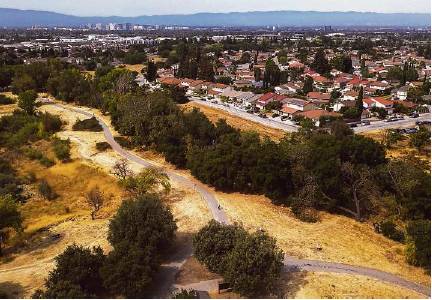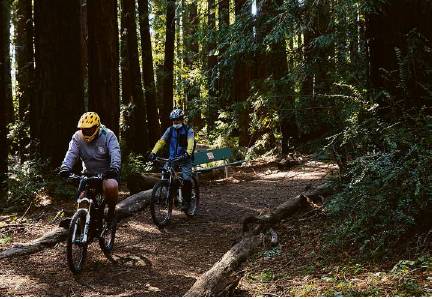Initiative could add dozens of new park projects by 2030
By Kurtis Alexander
The Bay Area could see an unprecedented investment in parks and open space over the next decade, from newly protected redwood groves to freshly restored Native American sanctuary sites, as a sweeping land conservation initiative gathers momentum.
The initiative, known as 30 by 30, aims to conserve 30% of the world’s lands and water by 2030. It’s a bid to not only protect natural areas and biodiversity but to slow the planet’s warming by ensuring enough plants and soil remain to suck up carbon.
With new sources of state and federal funding becoming available, a coalition of 67 Bay Area nonprofits and public agencies on Tuesday rolled out a $700 million plan for how they’d like the region to contribute to the effort. The document is a wish list of more than 110 projects that supporters say could become reality when the new money is released.
“There’s a lot of political will for 30 by 30,” said Annie Burke, executive director of Together Bay Area, the umbrella group that’s working on behalf of parks, land trusts, cities, counties and Indigenous groups to push the regional projects forward. “Hopefully it will catalyze the action.”
In California, 24% of lands and 16% of coastal water are currently protected, according to the state Natural Resources Agency. Protection can take the form of a marine sanctuary, park or working ranch, per the agency’s terms.
By the state’s math, 6 million acres of California lands and a half million acres of water still need to be conserved to hit the 30% mark.
Financing remains a significant hurdle, even as supporters say the projects are planned and ready to go. The state has allocated $2 billion in new funds, but that is substantially less than the total sum needed (exactly how much is unclear).
In the Bay Area, some proposals are geared toward wildlife, such as building highway crossings for mountain lions and other animals around San Jose and Gilroy.
There are plans to acquire new places for people to visit, including purchase of privately owned tracts such as the 6,300-acre Cloverdale Ranch on the San Mateo County coast and 2,000 acres of redwood forest in Sonoma County.
There are also cultural endeavors, such as developing a network of outdoor community hubs on ancestral Lisjan Ohlone lands in the East Bay.
“It’s more than just the numbers,” said Noelle Chambers, vice president of conservation at the Palo Alto-based Peninsula Open Space Trust, a group that supports and stands to benefit from 30 by
30. “It’s about making land equitably accessible and stewarding land and caring for it long-term. It’s a holistic effort.”
To make the project list — and get the coalition’s support in seeking funds — the conservation work must meet at least one of three criteria: protect biodiversity, provide equitable access to nature or boost climate resiliency. Each of the projects is sponsored by an organization or public agency in the region. The scope is the Bay Area and Santa Cruz County.
Both President Biden and Gov. Gavin Newsom have committed to the 30 by 30 cause.
Within weeks of taking office last year, Biden signed an executive order pledging to protect 30% of U.S. lands and water by 2030. Newsom issued a similar directive for the state the prior year. Both cited the need to stave off extinction of plants and animals and confront climate change.
In December, the Newsom administration released a plan for how to comply. It suggested numerous strategies that include acquiring new lands, obtaining conservation easements on private property and restoring impaired natural areas. A final draft of the plan is due out by the end of the month.
“We are excited to be advancing a first-ever strategy to achieve the landmark target,” said Lisa Lien-Mager, spokeswoman for the Natural Resources Agency.
The $2 billion in state funding in this year’s state budget — California’s first allocation for the initiative — will be doled out over the next year and a half, for work that would help reach the 30 by 30 mandate, including projects to restore habitat, create wildlife corridors and boost coastal resilience to climate change.
The Biden administration, meanwhile, announced last week $440 million in federal funding for the America the Beautiful Challenge, which embraces 30 by 30 — though that will end up being a minor sum when split among the states.
The goal in California isn’t to necessarily have conservation spread uniformly across the state but to protect areas that offer the greatest ecological and climate benefits.
In the Bay Area, nearly 30% of the land is currently under protection, according to Together Bay Area. But the organization believes that because of the biodiversity here, more conservation is needed.
If all the work is completed, “You’ll see more parks, more people outside, more connection to natural lands,” said Burke, the group’s executive director. “The Bay Area will be an (even more) beautiful and healthy place to live.”
Kurtis Alexander is a San Francisco Chronicle staff writer. Email: kalexander@sfchronicle.com Twitter: @kurtisalexander

